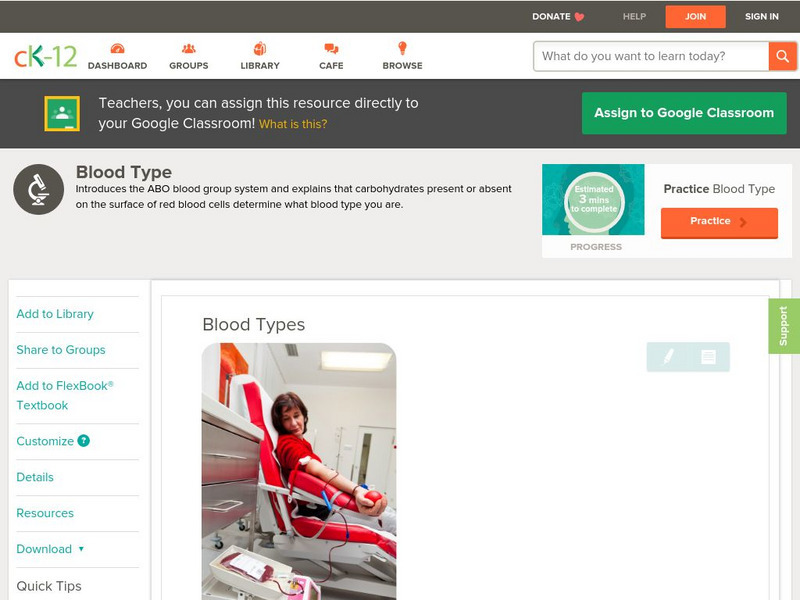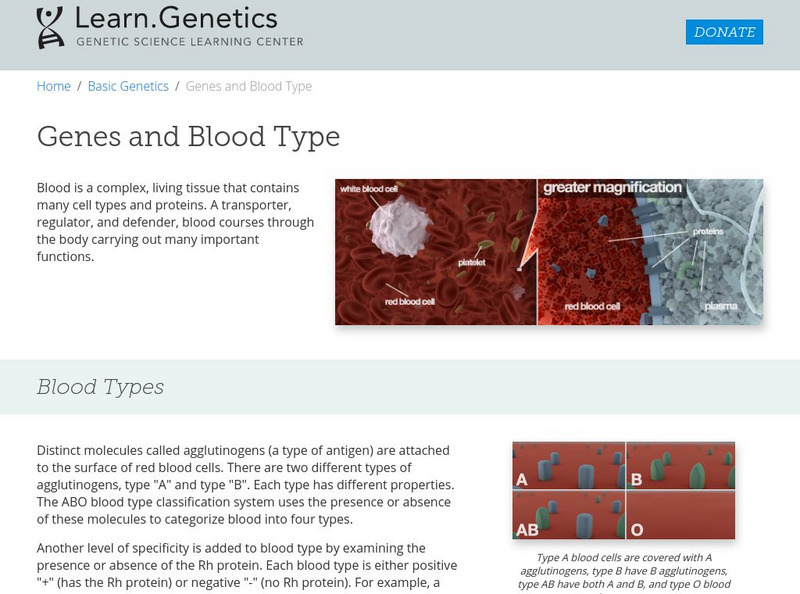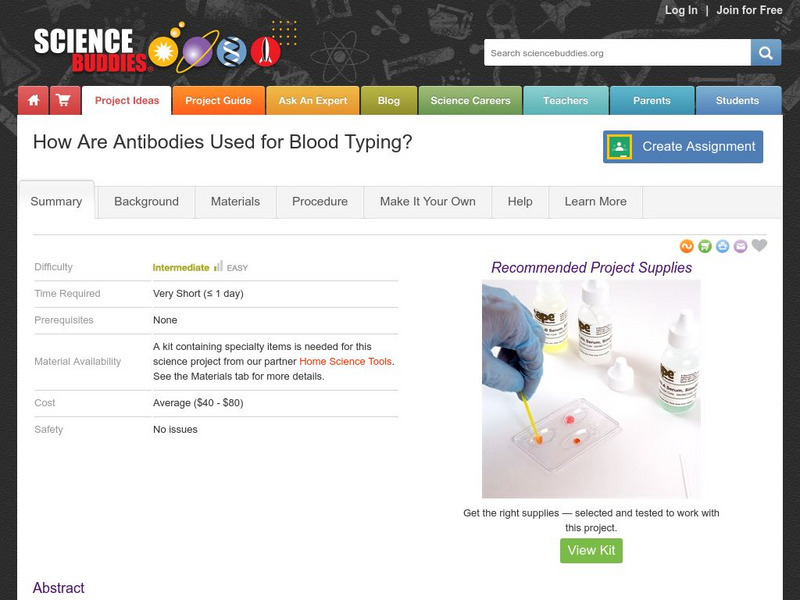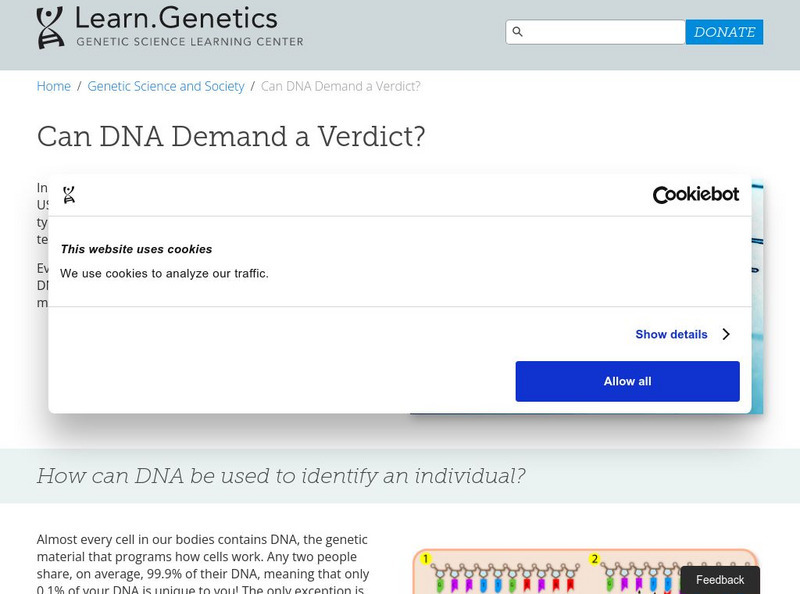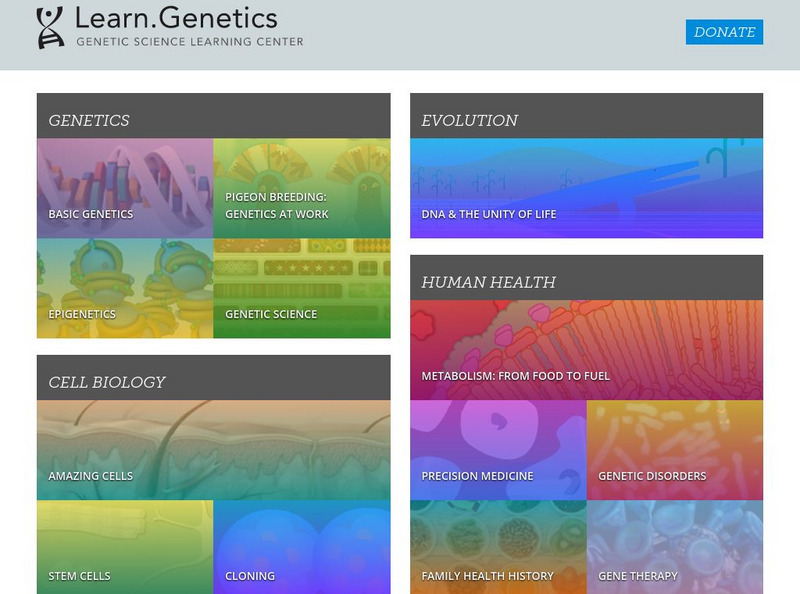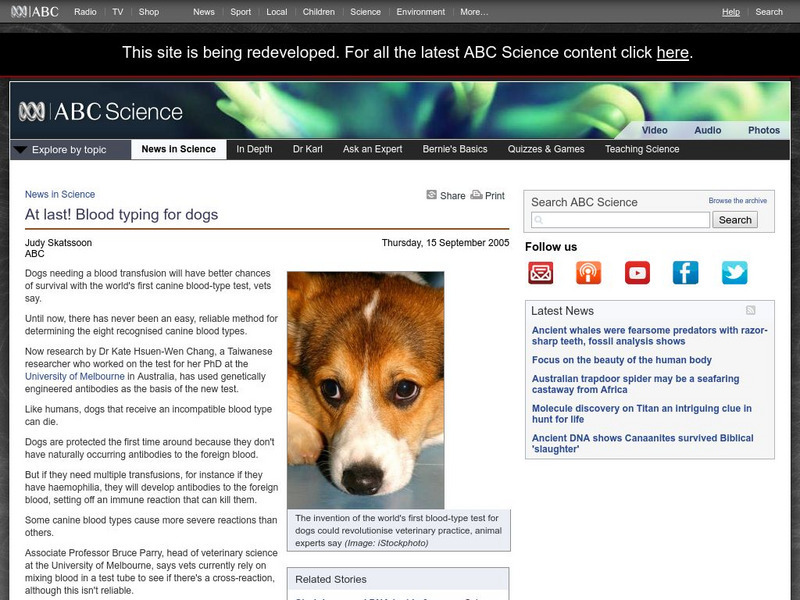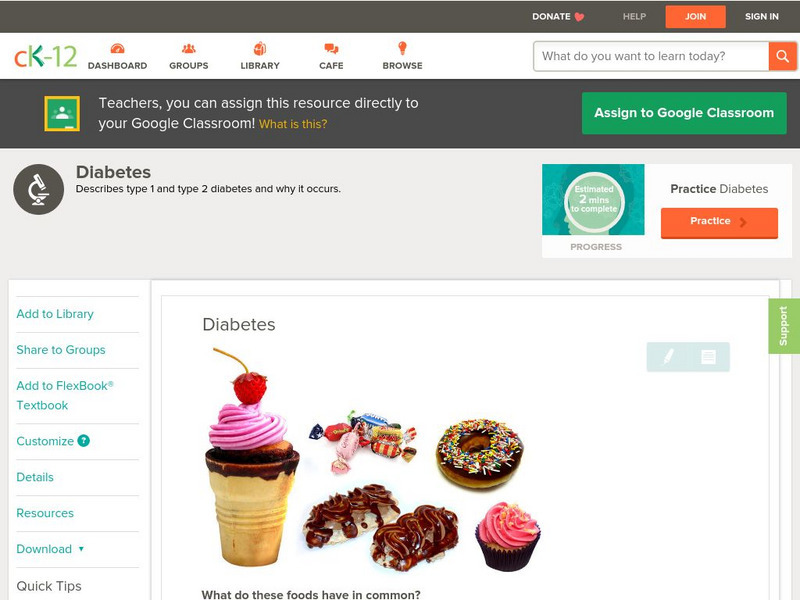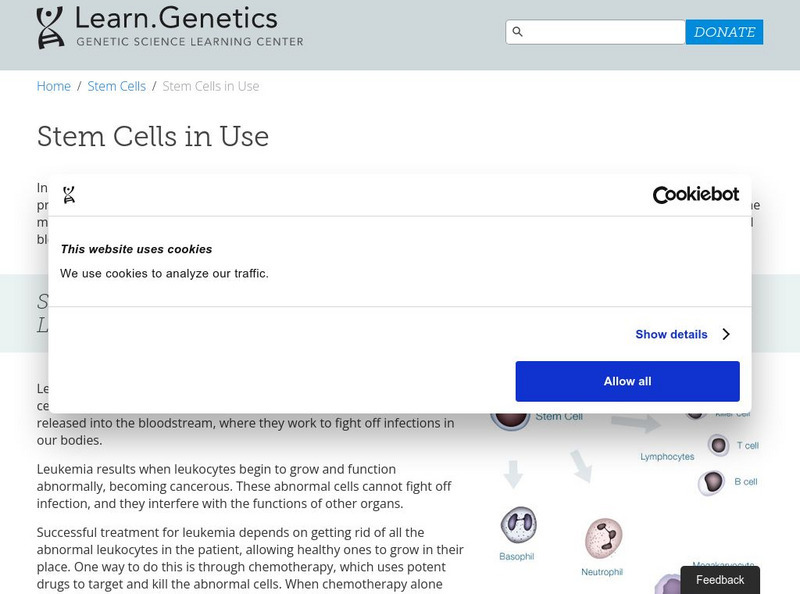CK-12 Foundation
Ck 12: Life Science: Blood Types
[Free Registration/Login may be required to access all resource tools.] Do you know what your blood type is? Maybe you have heard people say that they have Type A or Type O blood. Blood type is a way to describe the type of antigens, or...
OpenStax
Open Stax: Anatomy & Physiology: Blood Typing
Students learn about the science behind blood typing, and the application of that typing as it relates to human blood transfusions.
Palomar Community College District
Flashcards for Human Blood Typing
These cards provide a quick, interactive review of ABO, Rh blood typing science. Good for test preparation.
University of Utah
University of Utah: Learn Genetics: Genes and Blood Type
For a concise summary of human blood types, this is a great resource. Discussion includes the topics of genotype, phenotype and agglutinins. There is also a nice pictorial table that summarizes the three blood types.
Science Buddies
Science Buddies: How Are Antibodies Used for Blood Typing?
The human immune system has various ways of responding to an infection caused by bacteria or viruses. Our bodies produce proteins (antibodies) that are highly specific for the infectious agent as a part of our "humoral" immune response....
University of Utah
University of Utah: Genetic Science Learning Center: Dna and Verdicts
Part of a site on genetics, this page explores DNA as a forensic science. Explains how and why DNA can be used to convict or acquit a criminal from wrongdoing using forensic DNA analysis. Teacher resources too.
Bryn Mawr College
Serendip: Using Blood Tests to Identify Babies and Criminals
Brief text summary of what students learn in the Using Blood Tests to Identify Babies and Criminals lab along with links to download Student Handouts and Teacher Preparation Notes in PDF and Word formats. The lesson includes two...
University of Utah
University of Utah: Genetic Science Learning Center: The Basics and Beyond
This website offers a clear definition of the science of Genetics, highlighting DNA and genes. There is a neat, easy-to-understand animated tour of the basics and an opportunity to go inside an animated cell. Student can build a DNA...
University of Utah
University of Utah: Genetic Science Learning Center: Heredity and Traits
The Genetic Science Learning Center presents the world of heredity and traits including activities to better comprehend the science, clear explanations of aspects of heredity, and an interactive opportunity.
Georgia Department of Education
Ga Virtual Learning: Forensic Serology
In what ways does serological evidence help solve a crime? This comprehensive learning tutorial explores what information can be determined from a drop of blood and how blood typing is done. Learn what information we get from blood stain...
Australian Broadcasting Corporation
Australian Broadcasting Corporation: News in Science: At Last! Blood Typing for Dogs
From ABC News in Science, Judy Skatssoon's article discusses the possibilities of blood transfusions for dogs and the impact this will have on the future of dog care.
CK-12 Foundation
Ck 12: Life Science: 3.14 Non Mendelian Inheritance
Learn about some examples of inheritance that do not follow Mendelian inheritance rules.
CK-12 Foundation
Ck 12: Life Science: Diabetes
[Free Registration/Login may be required to access all resource tools.] Diabetes is a non-infectious disease in which the body is unable to control the amount of sugar in the blood. People with diabetes have high blood sugar, either...
University of Utah
University of Utah: Stem Cell Therapies Today
Several stem cell therapies are routinely used to treat diseases today. Find out about the different kinds of therapies used and the types of health problems they are useful in treating.
Curated OER
Chart Showing the Spectra of Different Types of Blood Samples, 1894
This concise site provides a brief discussion of the invention of the first work spectroscopes and their impact on forensic science.
Khan Academy
Khan Academy: The Basics of Malaria
An overview of malaria and the types of Plasmodium that is carried by the Anopheles mosquito infecting red blood cells and liver cells in the human body. Symptoms of malaria are also discussed.
